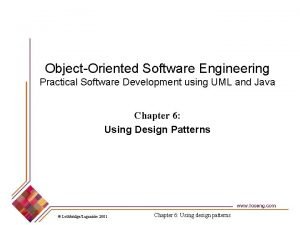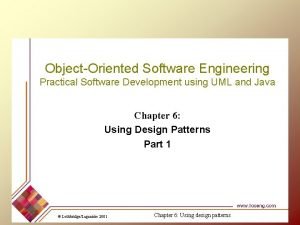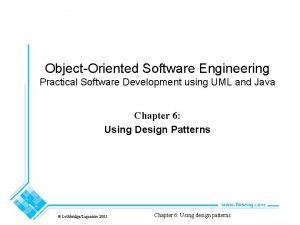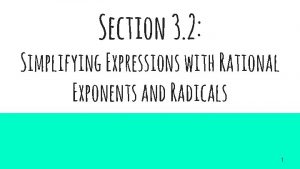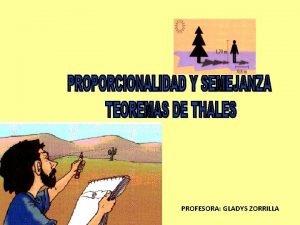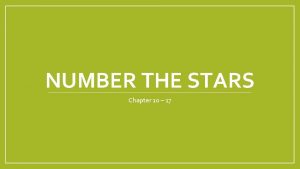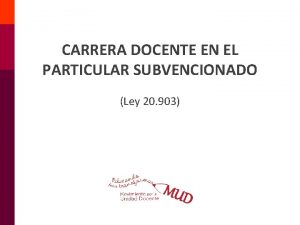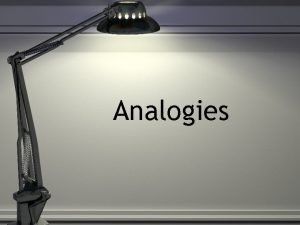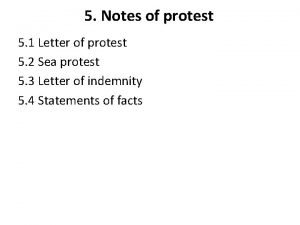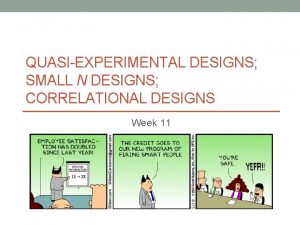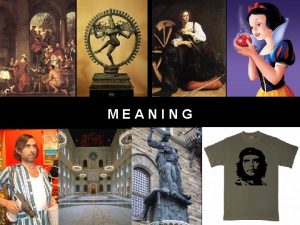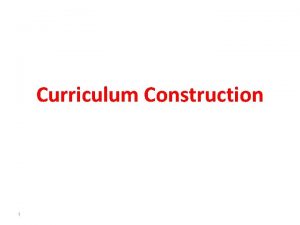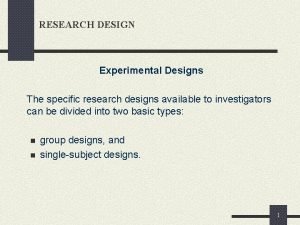Curriculum Designs Meaning Curriculum Design is a particular












- Slides: 12

Curriculum Designs

Meaning Curriculum Design is a particular shape, framework, or pattern of learning opportunities.

Steps in Curriculum Design § The curriculum design process involves 5 steps: 1. Considering basic factors relating to the major 2. 3. 4. 5. goal and domain. Identifying sub-goals of the domain Identifying possible types of learning opportunities. Considering and selecting alternative designs. Identifying implementations requirements.

Criteria for Selecting the Curriculum Design § Selecting the curriculum design depends upon the following criteria: A. Purposes and goals to be achieved B. Sources of objectives to be utilized C. Characteristics of learners to be identified D. Nature of the learning process to be used E. Type of society for which design is meant F. Nature of knowledge to be provided

§ The curriculum design whichever is selected influences the following: A. What strategies will be used for teaching? B. What role is to be played by the teacher? C. What role is to be played by the students? D. What instructional material is required? E. What evaluation devices are to be used?

Curriculum Designs Subject matter/disciplines design Specific competencies/technology design Human traits/process design Social functions/activities design Individual needs and interests/activities design

• This design is followed in most of the schools and universities. • Knowledge is organized into disciplines which can be used easily as school subjects. • In this design, the major role is of knowledge. • The curriculum is designed on knowledge base so it can be up to date by adding new knowledge and deleting obsolescent knowledge.

Specific competencies/technology design • It is of the most narrow or limited possibilities because it focuses on specific competencies. • It is more concerned with “how” and less with “what”. • The desired performance is considered as competency, the learning activities are organized to achieve the objectives and the learner’s performance is checked as a basis for moving from competency to another competency.

Human traits/process design • This design has two special features: A. The main goal is to develop certain pre-determined and specific human traits. B. Definite steps are taken to develop pre-determined and specific human traits. • John Raven identified some human traits for development such as work and communicate effectively with others, lead and follow effectively, make decisions and judgments, invent, plan, forecast, and tolerate.

Social functions/activities design • The design emphasizes society as an on influence on curriculum development. • The design is drawn from the philosophy of social reconstruction. • In this design, schools are used to build a new society. • In this design, three organizational themes are included: A. The curriculum design should follow the persistent functions, areas of life situations in humanity’s existence. B. The design should organize curriculum around aspects of problems of community life. C. The design should be used for bringing improvement in society through involving schools and their students.

Individual needs and interests/activities design • It is based on the felt and unfelt needs of individual and groups of students. • It has its roots in the ideas of Roussean, Pestalozzi and John Dewey. • It has the following main characteristics: A. It is based on a knowledge of students needs and interests in general and on diagnosis of specific needs and interests of the community in particular. B. It is highly flexible to meet the needs and interest of particular students. C. It assumes that students will be taught individually at appropriate points in the curriculum.

• Examples of the implementation of this design ere the Dewey School at the University of Chicago and the project method by Kilpatrick. • The design has three main points in its favor: A. Learning opportunities based on the needs and interests are more relevant to the students. B. The design involves a high degree of motivation and therefore success of the student. C. Achievement of the students’ potential is facilitated by the design.
 Particular design
Particular design The recurring aspects of designs are called design
The recurring aspects of designs are called design The recurring aspects of designs are called design
The recurring aspects of designs are called design The recurring aspects of designs are called design
The recurring aspects of designs are called design Exploratory and conclusive research design
Exploratory and conclusive research design A particular panda consumes 1944 calories
A particular panda consumes 1944 calories Teorema particular de thales
Teorema particular de thales Number of the stars chapter 10
Number of the stars chapter 10 In a particular television tube the beam
In a particular television tube the beam Asignación por tramo de desarrollo profesional
Asignación por tramo de desarrollo profesional Aphorism examples
Aphorism examples Starvation binging analogy
Starvation binging analogy Letter of protest shipping sample
Letter of protest shipping sample

